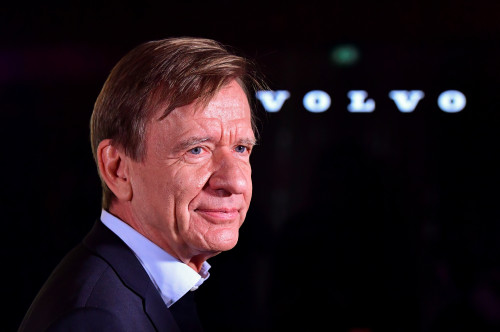GOTHENBURG, Sweden (Reuters) -Volvo Cars’ new top executive said on Thursday the company would produce more cars in the U.S. while ramping up its regionalisation efforts, just as a 25% U.S. tariff on global autos takes effect.
European companies are scrambling to find solutions as President Donald Trump’s 25% duties on foreign cars became effective and a bigger-than-expected wall of import tariffs was unveiled on Wednesday.
Volvo Cars, which made an unexpected decision on Sunday to replace its CEO with former CEO Hakan Samuelsson, has struggled lately, with its share price falling to record lows amid a slowdown in demand for electric vehicles and global uncertainty.
As the company held its annual general meeting in Gothenburg on Thursday, investors were eager to hear what Samuelsson, who led the company for more than 10 years until 2021, would say about plans to revive the share price and improve the company.
“The share price has not developed as you shareholders have expected … This is an indicator that our shareholders are not fully invested in Volvo Cars,” Samuelsson said, adding that it would be his job to win that faith back in the company.
He said he would look at ways to cut costs and improve strategy, which would include ramping up its regionalisation efforts with hubs in China, the U.S. and Europe.
“We are well prepared in China and in Europe. But we need to be better in the U.S. to get around the import tariffs,” Samuelsson said, adding he expected to ramp up production at its Charleston plant in South Carolina.
His comments mirrored those made by former CEO Jim Rowan to Reuters in March. The company currently produces a pricier electric SUV, the EX90 in the South Carolina factory, as well as Polestar’s Model 3, while its cheaper model, the EX30, will start production soon in Europe.
“I think the next car should be some car with a high volume in the U.S. … I don’t know exactly what that car would be,” he told Reuters, adding that what might be a best selling car today would perhaps not be the same in five years.
“So I think we have to scratch our foreheads and think.”
Samuelsson told investors he would take some time to look at what had already been done in his absence and that he expected to return in a month or two with a turnaround plan for the company and a strategy focused on continued electrification, profitability and regionalisation.
“To think that you can produce one type of car in one place and send it across the world is a thing of the past,” he told investors.
(Reporting by Marie Mannes in Gothenburg; editing by Anna Ringstrom, Bernadette Baum and Paul Simao)


